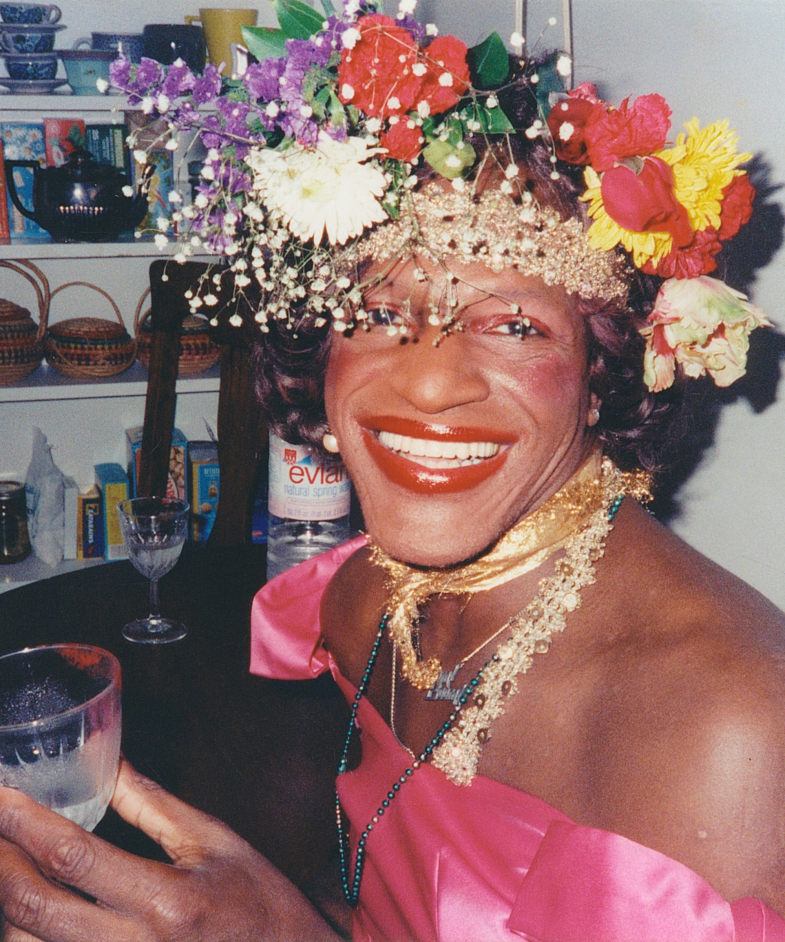
On what would have been her 75th birthday, LGBTQ+ activist and icon Marsha P. Johnson made history yet again, almost thirty years after her passing. New York governor Chris Cuomo announced on August 24, 2020 that what was previously known as the East River State Park will now be Marsha P. Johnson State Park, the first state park in the country to be dedicated to an LGBTQ+ person.
The park will be renovated to improve its facilities as well as feature art that celebrates Johnson’s life. There will be detailed signage outlining the activism Johnson did in leading the Gay Liberation movement, including her participation in the 1969 Stonewall Uprising and her work establishing a shelter to house LGBTQ+ youth rejected by their families.
In his announcement, Governor Cuomo said, “Too often, the marginalized voices that have pushed progress forward in New York and across the country go unrecognized, making up just a fraction of our public memorials and monuments.” He added, “Marsha P. Johnson was one of the early leaders of the LGBTQ+ movement, and is only now getting the acknowledgement she deserves. Dedicating this state park for her, and installing public art telling her story, will ensure her memory and her work fighting for equality lives on.”
Just across state lines in New Jersey, in Johnson’s home town of Elizabeth, officials similarly announced plans to dedicate a monument to Johnson. It will be located near Elizabeth’s City Hall, in an area used to “recognize trailblazers, pioneers, and international patriots.”
Johnson’s nephew, Al Michaels, is quoted as saying, “Marsha is needed now. Here we have the Black Lives Matter movement and the Trans Lives Matter movement. We have the same thing happening to people today, as far as police brutality.” He continued, “And as far as equality and justice, and Marsha was at the forefront of all that in 1969. And here it is 2020, and we’re in exactly the same place. And Marsha’s spirit has come to guide us through this fight, [like] she did back at Stonewall.”
In celebration of Marsha P. Johnson’s life’s work but also in somber acknowledgement of how far we still have yet to go, the Press wants to celebrate her by highlighting some of our recent books with themes that share her enthusiasm for LGBTQ+ history and rights.
Click on a book’s title to be brought to its landing page on our publishing partners’ websites, either Rutgers University Press or Rowman & Littlefield.
1.) Indiscreet Fantasies: Iberian Queer Cinema
Andrés Lima-Hincapié and Conxita Domènech
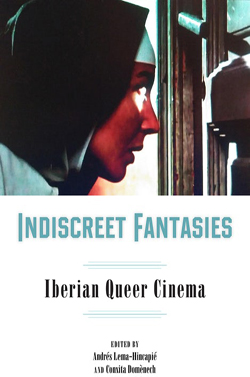
Pedro Almódovar may have helped put queer Iberian cinema on the map, but there are also multitudes of other LGBTQ filmmakers from Catalonia, Portugal, Castile, Galicia, and the Basque Country who have made the Peninsula one of the world’s most vital sources for queer film. Together, they have produced a cinema whose expressions of queer desire have challenged the region’s conservative religious and family values, while intervening in vital debates about politics, history, and nation.
Iberian Queer Cinema is a unique collection that offers in-depth analyses of fifteen different films, each by a different director, produced in the region over the past fifty years, from Narciso Ibáñez Serrador’s La residencia (The House That Screamed, 1970) to João Pedro Rodrigues’ O ornitólogo (The Ornithologist, 2016). Together, they show how queer Iberian cinema has responded to historical traumas ranging from the AIDS crisis to the repressive and homophobic Franco regime. Yet they also explore how these films gesture towards a more fluid understanding of sexuality, gender, and national identity. This book will thus give readers a new appreciation for both the cultural diversity of Iberia and the richness of its moving and thought-provoking queer cinema.
2.) Novel Bodies: Disability and Sexuality in Eighteenth-Century Literature
Jason S. Farr
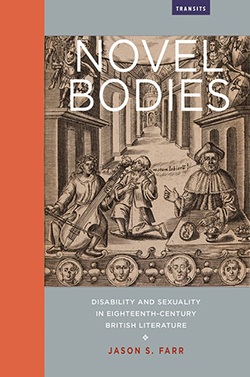
Novel Bodies examines how disability shapes the British literary history of sexuality. Jason Farr shows that various eighteenth-century novelists represent disability and sexuality in flexible ways to reconfigure the political and social landscapes of eighteenth-century Britain. In imagining the lived experience of disability as analogous to—and as informed by—queer genders and sexualities, the authors featured in Novel Bodies expose emerging ideas of able-bodiedness and heterosexuality as interconnected systems that sustain dominant models of courtship, reproduction, and degeneracy. Further, Farr argues that they use intersections of disability and queerness to stage an array of contemporaneous debates covering topics as wide-ranging as education, feminism, domesticity, medicine, and plantation life. In his close attention to the fiction of Eliza Haywood, Samuel Richardson, Sarah Scott, Maria Edgeworth, and Frances Burney, Farr demonstrates that disabled and queer characters inhabit strict social orders in unconventional ways, and thus opened up new avenues of expression for readers from the eighteenth century forward.
3.) Don’t Whisper Too Much and Portrait of a Young Artiste from Bona Mbella
Frieda Ekotto
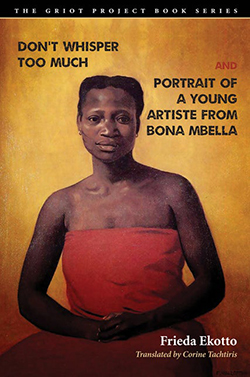
Don’t Whisper Too Much was the first work of fiction by an African writer to present love stories between African women in a positive light. Bona Mbella is the second. In presenting the emotional and romantic lives of gay, African women, Ekotto comments upon larger issues that affect these women, including Africa as a post-colonial space, the circulation of knowledge, and the question of who writes history. In recounting the beauty and complexity of relationships between women who love women, Ekotto inscribes these stories within African history, both past and present. Don’t Whisper Too Much follows young village girl Ada’s quest to write her story on her own terms, outside of heteronormative history. Bona Mbella focuses upon the life of a young woman from a poor neighborhood in an African megalopolis. And “Panè,” a love story, brings the many themes from Don’t Whisper Much and Bona Mbella together as it explores how emotional and sexual connections between women have the power to transform, even in the face of great humiliation and suffering. Each story in the collection addresses how female sexuality is often marked by violence, and yet is also a place for emotional connection, pleasure and agency.
4.) The Dark Eclipse: Reflections on Suicide and Absence
A.W. Barnes
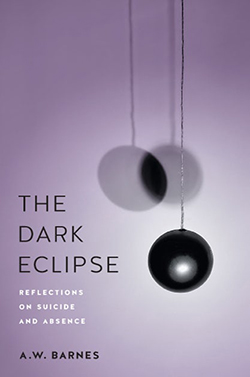
The Dark Eclipse is a book of personal essays in which author A.W. Barnes seeks to come to terms with the suicide of his older brother, Mike. Using source documentation—police report, autopsy, suicide note, and death certificate—the essays explore Barnes’ relationship with Mike and their status as gay brothers raised in a large conservative family in the Midwest. In addition, the narrative traces the brothers’ difficult relationship with their father, a man who once studied to be a Trappist monk before marrying and fathering eight children. Because of their shared sexual orientation, Andrew hoped he and Mike would be close, but their relationship was as fraught as the author’s relationship with his other brothers and father. While the rest of the family seems to have forgotten about Mike, who died in 1993, Barnes has not been able to let him go. This book is his attempt to do so.
5.) Representing Queer and Transgender Identity: Fluid Bodies in the Hispanic Caribbean and Beyond
Alexandra Gonzenbach Perkins
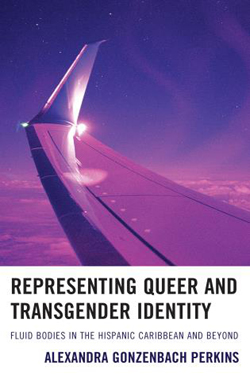
Fluid Bodies traces the intersections of global movement with transgender and queer identities from authors and artists of the Hispanic Caribbean. Utilizing the theme of fluidity and travel, Fluid Bodies analyzes novels, graphic novels, theatre, and performance art. These works demonstrate how transgender and queer bodies redefine belonging, particularly national belonging, through global movement and community making practices. Through these genres, the text follows the movement of transgender and queer identities from textual spaces to spaces of the body. The gradual movement from text to body—as it occurs in these genres—demonstrates the variety of representational strategies that dismantle binary readings of gender, sexuality, and nationality.
Transgender visibility is a pressing social issue, and today’s transgender moment will be a social and political necessity for years to come. Of particular importance are representations of transgender and/or queer people of color. The field of transgender representation is growing, and Fluid Bodies adds to the visibility of transgender and queer identity from the Hispanic Caribbean. By investigating the relationship between novels, graphic novels, theatre, and performance art, Fluid Bodies emphasizes how each work plays on and against the separation of language and the body, and how Hispanic Caribbean authors and artists represent transgender and queer identity in order to redefine cultural and national belonging in various geographic spaces.